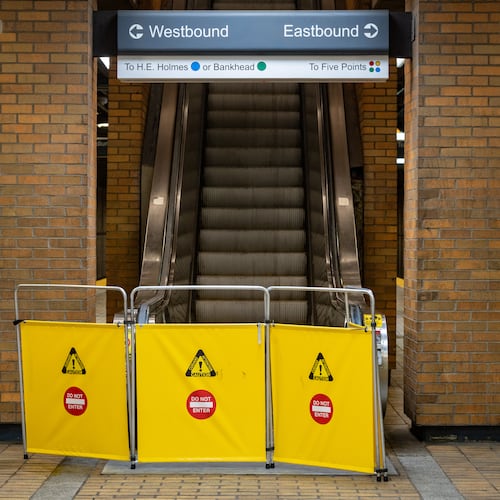Hurricane Florence, which is barreling toward the United States at more than 140 mph, was upgraded to a Category 4 storm Monday and is considered a major hurricane, according to Channel 2 Action News.
The threat of it making landfall later this week, likely Thursday afternoon, looms over the Southeast and Mid-Atlantic states.
Four states — South Carolina, North Carolina, Virginia and Maryland — have declared states of emergency.
According to Channel 2 Chief meteorologist Glenn Burns, it could be the strongest storm to hit the Carolinas in nearly three decades.
During a wide-ranging news conference Monday afternoon, South Carolina Gov. Henry McMaster issued a mandatory evacuation for eight coastal counties, which goes into effect at noon Tuesday. Those counties are: Charleston, Berkeley, Beaufort, Colleton, Dorchester, Georgetown, Horry and Jasper.
RELATED: Florence may miss Georgia, but residents aren't taking chances
RELATED: A look at some of Georgia's worst hurricanes
Georgia Gov. Nathan Deal has not issued a state of emergency, but his chief of staff, Chris Riley, told AJC.com that the Georgia Emergency Management Agency began tracking and monitoring the storm Monday.
With storms like this, people often have lots of questions about when it will make landfall, what areas should be affected and what’s being done in preparation.
The National Hurricane Center and Channel 2's Severe Weather Team 2 have been following every development in Hurricane Florence's strength and path. Here's what you need to know.
• When and where should Florence make landfall?
Florence could reach the Atlantic coast by Thursday afternoon, according to Channel 2. As of 5 p.m. Monday, it was situated about 525 miles southeast of Bermuda.
RELATED: Where is Florence now?
Monday afternoon, the National Hurricane Center classified the storm as a Category 4 hurricane with 130-mph winds. Later Monday, the winds had increased to 140 mph, with some registering as high as 160 mph.
The latest projection has Florence making landfall slightly north of Georgia’s coast.
“Big high pressure to the north of this storm, it’s going to block the recurve out to sea,” Channel 2 meteorologist Brian Monahan said. “That’s usually what we see with storms in this part of the Atlantic — not this time. It’s coming toward the East Coast as a major hurricane.”
However, the National Hurricane Center reported that “given the uncertainty in track and intensity forecasts at those time ranges, it’s too soon to determine the exact timing” Florence will make landfall.
RELATED: Delta caps fares for flights from cities in path of Florence
Monahan said everyone along the coast needs to be aware of Florence’s development as it becomes more likely to make landfall toward the end of the week.
“Mainly we’re watching the Carolinas, but there will be coastal impacts all up and down the East Coast,” he said.
He said a major shift toward Georgia before landfall is “not something we think is probable.”
Georgia will likely see drier air associated with Florence, driving rain chances down across the state as the system makes its way north.
• How strong should Florence be?
Florence’s strength and categorization are constantly changing. The storm was briefly classified a Category 4 hurricane Wednesday while it churned out in the Atlantic with 130-mph winds. It temporarily lost steam, but has since continued to pick up speed and strength, according to Channel 2.
“This is a massive storm,” he said.
The NHC considers Category 3 to be hurricanes and stronger major hurricanes, meaning winds should be stronger than 110 mph. A Category 4 hurricane has winds in excess of 130 mph. It's the first major hurricane to form in the central Atlantic Ocean this year, Monahan said.
At either strength, homes can incur major damage and trees can be snapped or uprooted. Even in nearby areas where the storm doesn’t make landfall, rough seas and beach erosion are highly likely, Monahan said.
It could bring 30- to 40-foot waves to the coast, he said.
• Will this be the last storm this hurricane season?
Nope. In fact, there’s already a “conga line” of storms coming off the west coast of Africa that all have the potential to develop into tropical storms or hurricanes, Channel 2 Chief meteorologist Glenn Burns said.
Tropical Storm Helene and tropical depression nine have already formed, and at least two other potential disturbances have been identified over west Africa, Monahan said.
Hurricane season reaches its official peak Monday, so make sure to continue to check for severe weather updates in the upcoming weeks.
» For a detailed forecast, visit The Atlanta Journal-Constitution weather page.
» Download The Atlanta Journal-Constitution app for weather alerts on-the-go.
The Latest
Featured



